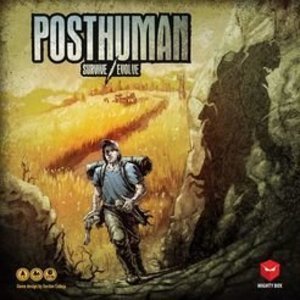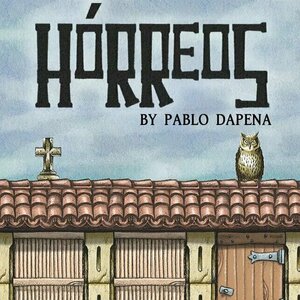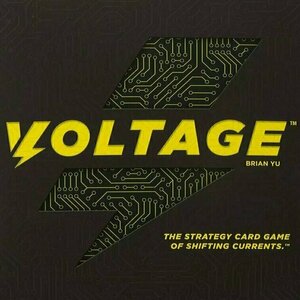Purple Phoenix Games (2266 KP) rated A Battle of Onin in Tabletop Games
Feb 9, 2021
A Battle for Onin is a trick-taking card game where players will be using Shoguns, Ninjas, Samurai, and Monks as suits and each suit will have differing levels of hierarchy. The first player to earn 35 total influence (VP) will claim victory.
DISCLAIMER: We were provided a prototype copy of this game for the purposes of this review. These are preview copy components, and I do not know for sure if the final components will be any different from these shown. Also, it is not my intention to detail every rule in the game, as there are just too many. You are invited to download the rulebook, back the game through the Kickstarter campaign, or through any retailers stocking it after fulfillment. -T
To setup shuffle the deck of cards and deal each player 13 cards. The dealer then flips the top card of the deck and becomes the Ruling Class (trump) for the hand. The game is now setup and ready to begin!\
After the Ruling Class has been revealed, the player left of the dealer will make a bid for how many Conscriptions (tricks) they believe they will take in the round, with a minimum bid of 3 tricks for all players. Each other player will do the same until the leading player’s turn comes back around. That player then proceeds to play cards from hand in attempt to win tricks. Like in most trick-taking games player will need to follow the suit that was led (or flipped at the beginning of the round). A twist here is that trump may not be led until it has been used to win a trick previously within the round.
As mentioned earlier, each suit has a hierarchy of power, where Bronze is the lowest in power increasing to Silver, then to Gold, and finally to Jade. Within these divisions are yet three more classifications of power: one sphere (lowest) to three spheres (most powerful). In addition still is one card from each suit whose background is orange in color and features one large sphere. These are the Legendary cards, and the most powerful of each suit. Legendary cards may be used as the highest-ranking card in their suit, or as a Ruling Class card. When played as Ruling Class (trump) the hierarchy of Legendary cards are as follows: Monk (lowest), Samurai, Ninja, Shogun (most powerful).
Play continues with players using their cards to win Conscriptions (tricks) and meet their bid. Should a player meet their bid exactly then they score Influence (VP) for their tricks won. Should a player win more tricks than bid earlier, they still score Influence for the tricks won, but those tricks in excess of the bid amount are scored also as Corruption. When a player meets seven Corruption they immediately lose 10 Influence and the Corruption counter resets for that player. If, by chance, a player does not meet the mandatory bid of three tricks, their Influence is lowered by one point. However, should a player bid higher than the minimum of three but not meet that bid their score will be reduced by the amount of the bid for the round (example: a player bids seven tricks but earns only five. They reduce their Influence by seven points – ouch).
Once scores are tallied at the end of each round, a winner may be announced if they score at least 35 points. If no winner is crowned this round, a new dealer is assumed and another round setup as at the start of the game.
Components. Again, this is a prototype copy of the game and this copy is actually hand-made by the good people at Guise Gaming. Each card in this copy is laminated and the game box is HAND PAINTED. I have never received a hand painted box before, and it is certainly appreciated. So aside from the non-manufactured components, the art is quite good on the cards. I know some players will have issues with the backgrounds seeming plain, but I quite appreciate it so that I can concentrate on the game and not be overly distracted by what may be happening in the backgrounds.
Gameplay is good, if not a bit confusing at first. With four different suits containing essentially the standard 13 cards per suit it should be an easy no-brainer to keep things squared away. However, I found that having the rule booklet open to the page detailing the hierarchy of sphere color/material was very handy for other players. The Legendary cards are easy to distinguish because they look cool and different from all the other cards. I really know nothing about any Asian language, so the characters (or letters/words) depicted on the cards are of no help to me trying to distinguish power levels.
That said, when contacted by the publisher about A Battle of Onin, they mentioned that other people were calling it a theming of Spades. While I can understand this simplification, what I have yet to mention is that the game also comes with a bevvy of optional scoring rules and a welcoming message to include any sort of house rules deemed enjoyable. Spades does not do that, to my knowledge. While the vanilla gameplay is very similar to Spades, A Battle of Onin using any of these optional scoring modes certainly adds layers of complexity that may be daunting to use at first, but may attract more hardcore gamers.
All in all I am so glad I was able to try A Battle of Onin. Once the suits and power levels are learned, the game is quite snappy and enjoyable. The art is beautiful, and I applaud the use of orange background for the Legendary cards. If you are looking for a different spin on Spades I urge you to take a look at A Battle of Onin. It might surprise you with the varying levels of difficulty found within the optional scoring rules, and a bit more intrigue than the classic game upon which it is based. Personally, my D&D Monk might argue that he is far superior to any Shogun, but also he just kicked in a door that contained a room full of vampires. So there’s that.
Purple Phoenix Games (2266 KP) rated Posthuman in Tabletop Games
Aug 25, 2021
Posthuman is set in that dark post-apocalyptic horrorscape and is an exploration adventure game with character upgrading and dice-driven combat. The twist here is that humans are trying to escape the mutant creatures to The Fortress, a safe haven for all, but once infected may turn mutant and also turn on the party to prevent that glorious end. In this review, however, I will be playing through the solo rules, and they do not have players turning into mutants during the game. Bummer, eh?
DISCLAIMER: We are using the Kickstarter Deluxe version of the game. We do have the Defiant expansion from the KS campaign, but will not be using it for this review (I don’t think). Also, we do not intend to cover every single rule included in the rule book, but will describe the overall game flow and major rule set so that our readers may get a sense of how the game plays. For more in depth rules, you may purchase a copy from the publisher directly or from your FLGS. -T
To setup consult the rulebook, as there are so many decks of cards and character setup steps that need to happen that I just cannot detail here. Once setup your play area will look something like the photo below. Once setup is complete you are ready to begin your journey to The Fortress.
Posthuman is played over a series of rounds until the player wins or loses. The only way to win is to enter The Fortress before the Event deck runs out, and obviously the only way to lose is to run the Event deck out of cards or become a mutant by suffering five scars.
A round consists of several phases. The first phase is Event Resolution. The player will flip the top Event card and resolve its text. These Events could be a one-shot bad (or good) thing for the player, or may be an ongoing Seasonal Event that will stay in play until another Seasonal Event is drawn.
After the Events, characters will need to Eat to survive. Characters will be able to forage for food in a subsequent phase, but know that food is very important and if characters go too long without eating they will be suffering penalties of their Health and Morale.
Once fed (or starved, I suppose), the player will Declare an Action from the following: Camp, Forage, Scout, or Move (in multiplayer there is an additional action as well). To Camp players will forego any other action to heal their character. When a character Forages they will flip the current tile’s marker to show it may no longer be foraged and draw a Supplies card to see what supplies they will be able to gather. These could be more food tokens, ammo, equipment or weapons. To Scout a character will draw terrain tiles equal to the number of exits shown on their current terrain tile. The player will place the tiles however they want and this will provide insight into future locations and what they may hold. Lastly a player may Move into a connected terrain tile and begin having encounters upon it.
Most of the action in Posthuman comes as a result of having encounters on terrain tiles. Depending on where the character meeple is located on the Central Board track encounters will be drawn from the level one, two, or three decks and encountered immediately. Most of the encounters are combats, and I could write another whole post on combat, but I will spare you the details and merely say that combat is very involved and encompasses many steps to resolve. At the end of the combat a character may receive the encountered creature card as a VP trophy to be spent later on upgrades. The VP card may also instruct the player to move the meeple one space closer to The Fortress on the Central Board track. The other type of encounter card presents choices for the player to make or stat tests to overcome via die rolls.
Play continues in this fashion until the player wins by reaching The Fortress, or by losing to the forces set against them.
Components. This box is chock FULL of components and they are all super high-quality and enjoyable to play with. I do have a couple issues with some bits. Firstly, the player boards are quite small, and the tracking cubes are not meant for big meaty paws at all. Similarly, the tracking chits to be used for stats on the player board are flimsy and don’t really stay in place too well. Also the game comes with two different shades of gray player meeple colors and NOT a purple option. Shame! Shame! Shame!
When all is said and done Posthuman delivers an exciting experience on the table for a solo player and indulges the player’s need to roll dice on the regular. Just me? Didn’t think so. The combat is great, but I found myself discarding more enemies than defeating in some games and that is quite annoying. One game I refused to Scout at all and that totally bit me in the booty. So Scout, y’all.
Just know that playing this solo is NOT a cakewalk at all. I watched a playthrough video where the host won the game but nearly every roll of the die was favorable and every combat successful. Even still, she nearly ran out of time and lost the game. So games really can come down to the wire. Now, I haven’t really gotten very close to winning yet, but my day is coming!
I like this one a lot, and will certainly be going back to it for my solo plays. I have been playing some really great solo games lately, and I am very thankful for that. Posthuman, however, I don’t think will get much multiplayer action at my house. The rules are plentiful and the people I normally game with do not enjoy rules-heavy games. Similarly, I don’t think the theme is for everyone. I dig it, but different strokes and all. If you are in the market for a new (to you) game that can be played solo or multiplayer with an interesting theme and is pretty difficult, look up Posthuman. Just stay away from the mutants. These do NOT want to recruit you to their school for gifted people.
Purple Phoenix Games (2266 KP) rated Horreos in Tabletop Games
Jan 23, 2022
Hórreos is a 2-player game in which players are competing to build the most effective and aesthetically pleasing hórreo in town. What is a hórreo? It is a building for storing grain, elevated from the ground to prevent rodents from infiltrating the structure. So in this game, players are building long and ornate hórreos that not only look stunning, but can keep the rats out of the grain! To setup for a game, each player receives 2 Action cards and the Hórreo cards are shuffled. The deck is placed between the players, and the top card is placed beside the deck to form a 2-card Market. The Leader card is placed beside the Market, facing the starting player. Pictured below is the setup for the beginning of a game.
Over a series of rounds, players will be taking 1 of 4 possible actions as they attempt to build the highest-scoring structure. Each player has 2 Action cards at their disposal. Each Action card has 2 possible Actions on it – one card is Sabotage or Plan, the other is Steal or Build. Both players will secretly choose whichever Action they wish to perform this turn, and place their card face-down in front of them. Players will then simultaneous reveal their chosen Actions, and they will be resolved in the following order – Sabotage, Plan, Steal, and Build. If a player has chosen to Sabotage, they will rotate their opponent’s Action card, forcing them to perform the other listed action this round. To perform the Plan action, the player will select one of the cards from the Market to be placed into their personal supply tableau. If you have chosen to Steal, you will select a card from your opponent’s supply, and take it into your own supply tableau. And finally, to Build is to move a card from your supply to your hórreo. Cards in your hórreo cannot be stolen. As with many other ButtonShy games, cards in your hórreo may be placed adjacent to, or even overlapping, previously played cards – cards may never be tucked under cards in your existing hórreo.
If both players have chosen the same action, the player with the Leader card facing them gets to decide which player will resolve their action first. The Leader card is then rotated to face the opposite player, and so on, for future ‘ties’. An important note – you cannot pick the same Action twice in a row, you must pick one of the other 3 Actions. So take that strategic tidbit into consideration when deciding what to do each round! The game continues in this fashion, with players selecting/simultaneously revealing Actions, resolving their Actions in order, and building their hórreo until there is 1 or fewer cards left in the Market and the players’ supplies at the end of a round. At that point, the game ends, points are tallied, and the winner is declared!
Points are scored in several ways. Most of the hórreo cards are ‘decorated’ with crosses and pikes, and each pair you have in your final hórreo will earn you points. Similarly, the number of doors in your hórreo, as well as adjacent pillars supporting your structure, will earn you points dependent upon the number (the more doors you have, the more points you earn, etc.). As mentioned earlier, you’re trying to keep these pesky rats out of your grain, so any rat pictured on your cards is worth -2 points, but each owl you have pictured eats (cancels out) one rat. And of course, whichever player has build the longest hórreo earns extra points. All points are tallied, and the player with the highest score is the winner!
I have to admit that Hórreos surprised me. The gameplay seems simple enough, so I honestly wasn’t really expecting a lot from this game. For such a small game, Hórreos is all about strategy. Each round, you only have 4 Actions from which to choose, and that really forces you to think long-term with your strategy. But at the same time, since Actions are revealed simultaneously and resolved in a set order, you have to consider what your opponent might do. For example, the Sabotage action forces the opposing player to use the other Action of their chosen card this round. Can you bluff your opponent into playing that Sabotage, forcing you to switch Actions, thus letting you perform the Action you really wanted to perform? That goes hand in hand with the fact that you cannot choose the same Action twice in a row. Can you anticipate your opponents moves to benefit your strategy? Or will you be out of touch, and thus be forced to essentially waste a turn performing an Action that you actually didn’t want to? And don’t forget the Leader card – if players both pick the same Action, the Leader can decide who resolves first. Maybe it’s strategically better to let your opponent resolve first, so then you can just negate what they just did, or vice versa.
To touch on components for a minute, this is a game of 18 cards in a wallet. So nothing out of the ordinary for ButtonShy. That being said, production quality is always top notch with these games, and I have no complaints. the cards are thick and sturdy, and the wallet is nice and supportive. The artwork is thematic and refreshing, while not being too overwhelming. Is it the most beautiful game I’ve ever seen? No. But it is aesthetically and thematically appropriate, and gives a serene and peaceful vibe. ButtonShy has yet to disappoint with their components, so I am definitely a big fan!
Hórreos is a pretty solid game. I’m not personally a huge fan of ‘take that’ type games, and there is an element of that in this gameplay. But there seems to be enough strategy needed to negate some of that direct competitiveness. The game itself is fast to teach, learn, and play, and that adds to the overall appeal. It’s not necessarily my favorite 2-player game, but it’s one that I can see myself pulling out often when I’ve got a quick minute between other games, or when I’ve got a little downtime. Purple Phoenix Games gives this one a structural 4 / 6. Check it out if you’re in the market for something small, yet strategic!
Purple Phoenix Games (2266 KP) rated Kim-Joy's Magic Bakery in Tabletop Games
Apr 8, 2022
Kim-Joy’s Magic Bakery is a cooperative hand management scenario-based card game for two to five players. In it, players are employees of the Magic Bakery and are tasked with baking wondrous items to satisfy a group of customers requesting their favourite (it’s British, I’m just doing my part) dishes. The game ends once all customers have been served or are otherwise no longer in the game. Depending on the current scenario, the group scores points based on how many customers they were able to serve. All players win together or they do not win.
Setup the Customers card deck according to the number of players, shuffle them, and deal out one or two (depending on number of players as well) face up to the table to begin the Customer Row. Do NOT shuffle the Layers cards. Instead, separate them by type and place them all face-up in decks by type. Do shuffle the yellow Ingredients cards and place out five face up (or face down depending on scenario) to form the Pantry Row. Each player draws a starting hand of three Ingredient cards from the deck, and the starting player takes the Kim-Joy standee to begin!
On a turn, the active player will have choices of actions to be taken, in any order they choose, from among the following: take an Ingredient card, pass a card to another player, bake a Layer, fulfill a Customer order, or refresh the Pantry. Depending on the number of players, each turn will consist of either two or three actions being taken. Most actions are self-explanatory, but I will give a quick hit to them all. The active player may see an interesting Ingredient card in the offer row and may simply draw it into their hand for an action. Once the player has enough Ingredients to bake a Layer (by discarding the requisite Ingredient cards) they may do so for an action. If the player has a card they believe another player could utilize, they may simply pass them that card as an action – either Ingredient or Layer. The goal of the game is help fulfill customer orders, so by using an action to fulfill an order, the player discards all the necessary cards and helps the group inch one step closer to victory. At a loss and need a suggestion for an action? Discard all cards from the Ingredient Row and draw new ones.
Once each player has completed their actions, the Customer Row is shifted one space to the right and a new Customer comes into the bakery. The bakery can only accommodate three customers, so if a new hungry Customer visits, they force out the Customer who has been there the longest, and the players lose the opportunity to serve that (possibly irate) Customer. Play continues in this fashion of players completing actions working toward satisfying as many Customers as possible until there are no more Customers in the deck nor in the bakery. Players then count the number of Customers they served, and score points according to the goals set by the scenario card! As the game typically takes 15-30 minutes, player usually request another try, so be prepared for that eventuality.
Components. This is simply a card game that includes an unnecessary, but cute, standee to mark the starting player. The cards are nice, and come in two sizes. Surprisingly, the cards sport a non-linen low-gloss finish (I’m just saying that many games nowadays are linen and as thick as possible) and feature whimsical and wonderful artwork. The game as a whole is very stylish and boasts a super fun theme. I have no issues with the components, artwork, or theme here. It all works together really well.
I will definitely suggest that new bakers player their first game without the added challenges of the scenarios. They throw in some extra complexity and difficulty that younger bakers just will not appreciate. The different scenarios are all very interesting and add in a little wrinkle to the game to make it just that much more intriguing. I have enjoyed all the different scenarios I have played, though I have not played all of them. In time, my dears. In time. Luckily, the designer has aptly seen it fit to include Helpful Duck cards that act as any Ingredient card needed at the time. These little cuties are God-sends in certain situations, and can also be included in more numbers to make scenarios easier to complete.
Being big fans of the show, I knew my wife and I would love this one. It is cute, challenging, but doesn’t try to be much more than what it is. With so many games out there competing to be bigger, more complex, and more aggressive, it is so nice to settle down with a light and jolly little card game like Kim-Joy’s Magic Bakery. I feel like I am working in a bakery while I’m playing – orders are coming in too quickly and I need just one or two more actions each turn to gather ingredients and bake new layers. It’s a really great theme and a really great game regardless of theme. The weight is perfect for young and older players, and good cooperative games that are not susceptible to quarterbacking are sometimes hard to find. Purple Phoenix Games gives this one a quite scrumptious 10 / 12. I wonder if Kim-Joy herself plays this game. If so, I officially challenge her to play with my wife and I… and maybe show us a couple tricks in the actual bakery as well. I could go for a killer Chocolate Bombe, Millionaire’s Shortbread, or a vegetarian Old Fashioned Trifle! And if you get THAT joke, my brother will love you.
Purple Phoenix Games (2266 KP) rated Voltage in Tabletop Games
Jan 8, 2022
Voltage is a competitive game for 2 players in which players are trying to be the first to earn 4 total points. To setup for the game, place the board between the two players. Take the double-sized Terminal blocks and place them on their corresponding spaces of the board. The starting orientation for the Terminal blocks should read + – – + horizontally across the board. Shuffle the deck of cards and deal 4 to each player. Each player selects a Score Marker and places it on the first space of their score track. Choose a starting player, and the game is ready to begin! Pictured below is the starting setup for a game.
Over a series of turns, players will be playing cards to their corresponding colored Terminals in an attempt to win the set. If the Terminal is set to a + then the player with the highest value will win the set. Alternately, if the Terminal is set to a – then the player with the lowest value will win the set. Cards are played to Terminals until a Terminal has a set of 5 total cards. The Terminal is then scored, the cards used are discarded, and the winning player earns a point. The game continues in this fashion until one player has earned 4 total points.
On your turn, you must perform one of these three actions: Play a card & draw a card, Play 2 cards, or Draw 2 cards. Simple enough, but the strategy is what makes this game. When playing cards to the different Terminals, there are a few placement rules to keep in mind. Of course, you may only play cards to the Terminal of the matching color. You are allowed to play cards on your side of the Terminal, or on your opponent’s side. Now to get to the actions themselves. If you choose to play a card and draw a card, you must do so in that order. If you choose to play 2 cards, you must play both cards on different colors – you cannot play both to the same Terminal. The last action, draw 2 cards, is self-explanatory.
The cards of the game are numbered from 1-3, and are of the 4 Terminal colors. There are 3 types of special cards: Bypass, Blown Fuse, and Transformer. A Bypass card allows you to move a card from your opponent’s side to your side of the Terminal, and a Blown Fuse allows you to remove a card from your opponent’s side completely from play. Both of these types of cards count toward the 5-card maximum of the Terminals, so use them wisely. A Transformer is identified by the card back – if the V logo is colored Yellow. When you draw a Transformer, you must then flip one of the Terminal blocks to its opposite side. Since the draw deck is always visible, you can see when a Transformer card is next, so that could help inform your strategy for your turn. The game continues in this fashion of alternating player turns until one player has earned 4 total points. They are declared the winner!
I have to say that the gameplay of Voltage really surprised me. I went into my first play expecting a light little game, and what I got was so much more. There really is a pretty decent strategic element to this game that caught me a little off guard at first. The gameplay itself seems simple – draw cards, play cards, win sets to earn points. But how you accomplish that is more challenging that it seems. The ability to play cards to your side or your opponent’s allows you to try to tip the scales in your favor. You can’t simply focus on your side alone, you need to keep tabs across the entire board to inform your next move. And then if your opponent draws a Transformer, they could just as easily reverse the polarity of that Terminal and now you’re on the wrong end! When playing 2 cards, they must be played to different colored Terminals, so how can you place your cards so they are most beneficial to you? Do you risk placing the big numbers right away in hopes of winning a + Terminal, or do you play lower-numbered cards in case that Terminal gets flipped? All things to consider throughout the game. Along with the strategy, one thing that I love about Voltage is that there really is no runaway winner each time – the direction of a set can literally change with one card, and neither player can really feel secure during the game. You have to anticipate your opponent’s moves while trying to complete sets that are currently favorable to you. That all being said, I guess there is a bit of a ‘take that’ element in the gameplay that might seem a little aggressive to some players, but that’s kind of just the nature of this head-to-head gameplay.
To touch on components, this game is pretty basic. The cards are nice quality, and the artwork is electrical and thematic. The board itself is nice and thick, and the spaces are all clearly marked. The Terminal blocks are probably my favorite components of this game. They are nice chunky plastic blocks, and the colors are bright neon colors – some of my favorites! For a game with such few components, the quality of them is appreciated.
After playing Voltage with Travis at The Table, I actually came home and found a copy for myself – that’s how much I liked it! I don’t think it’s my all-time favorite 2-player game yet, but it’s certainly working its way up the list…. If you’re in the market for a fast, yet strategic, 2-player game, I would highly recommend giving Voltage a try. The simplicity of the gameplay coupled with the vast strategic options makes for an engaging and entertaining game. Purple Phoenix Games gives this one an electrifying 9 / 12.
The Marinated Meeple (1853 KP) rated Costa Rica in Tabletop Games
Nov 20, 2018

2XL Snocross
Games and Entertainment
App
Download the @FreeAppADay.com Store App and wish for more top rated paid apps like 2XL Snocross to...

Flick Field Goal 18
Games, Sports and Stickers
App
FUN TO PLAY Become the ultimate placekicker in the new field goal challenge from the makers of the...

The Dutch Defence
Book
The Dutch Defence is an ambitious and underrated counter to the queen's pawn opening. With his very...

Premier Soccer League 2017 - Real Football Games
Games and Entertainment
App
Premier League Soccer 2017 is a real fun simulation which is about the great game known as soccer or...





